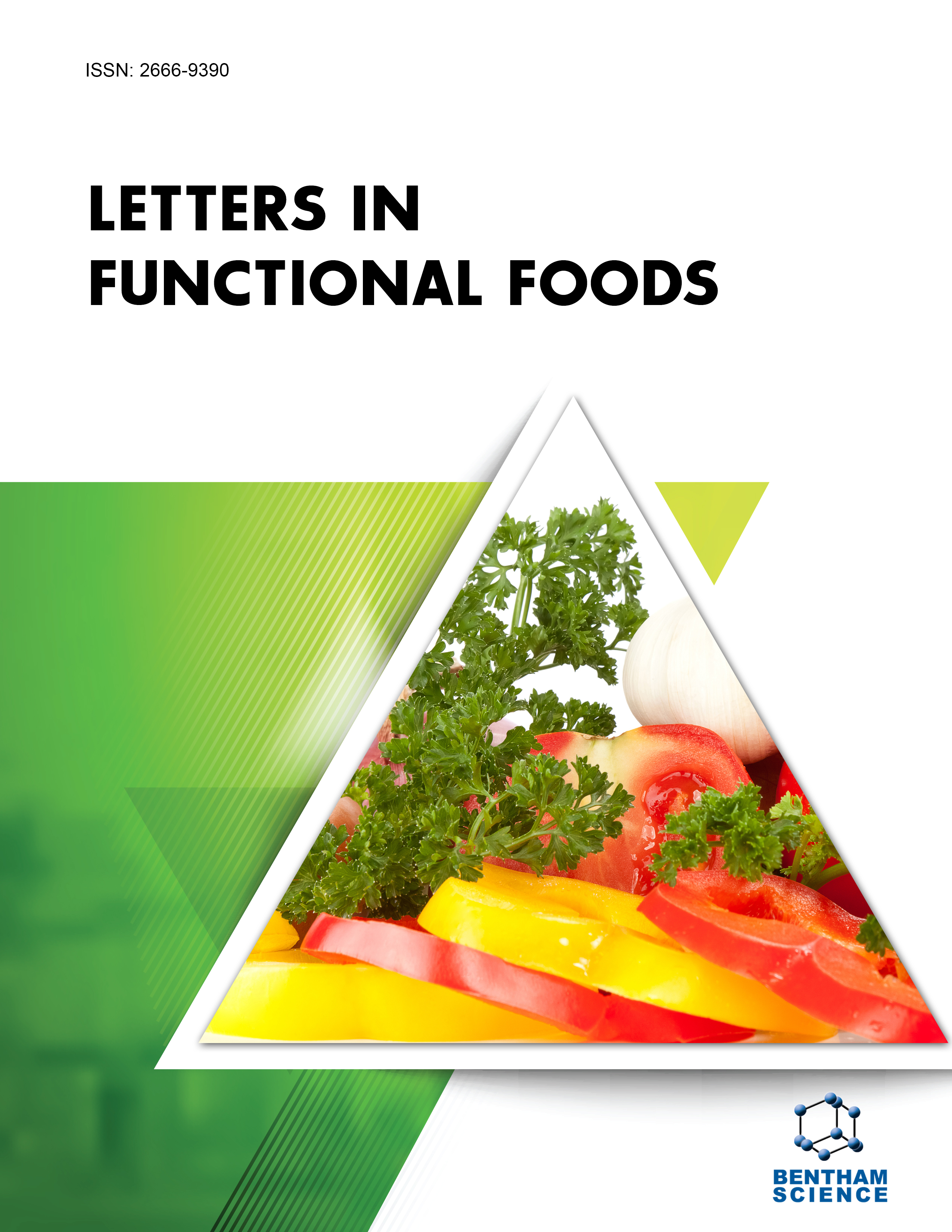- Home
- A-Z Publications
- Letters in Functional Foods
- Issue Home
Letters in Functional Foods - Current Issue
Volume 1, Issue 1, 2024
- Food Science, Nutrition and Dietetics, Food Science & Technology
-
-
-
Nutraceuticals Health Benefits in Cancer
More LessCancer is one of the leading causes of death worldwide, with multiple pathological components. Genetic abnormalities, infection or inflammation, poor diet, radiation exposure, work stress, and/or ingestion of toxic substances have all been associated with cancer development and progression. Early detection and treatment of cancer have been shown to increase the chances of survival and r Read More
-
-
-
-
From Scraps to Solutions: Harnessing the Potential of Vegetable and Fruit Waste in Pharmaceutical Formulations
More LessAuthors: Vishnu Mittal and Anjali SharmaBackgroundFood waste is a major worldwide problem due to the increasing population and imbalances in supply chains. Waste from fruits and vegetables are a substantial proportion of the overall food waste generated, accounting for approximately 42% of the waste produced. Methane, a strong greenhouse gas with a significant potential for global warming, is produced when these waste products are typically dumped in la Read More
-
-
-
Fruits of Emblica officinalis Linn. and its Phytochemicals in the Prevention of Ethanol-induced Hepatotoxicity: A Mini-Review
More LessAuthors: Manjeshwar Shrinath Baliga, Vijaya Marakala, Raymond Anthony and Thomas GeorgeExcessive alcohol consumption over time is one of the primary causes of liver disease and death globally. Because there is no effective treatment, the situation has become more complicated, and the emphasis has shifted to the use of alternative and complementary medicine to treat liver problems. Herbs with dietary use have played an important part in the treatment of liver diseases since antiquity. Amla or Indian gooseb Read More
-
-
-
Effects of Pesticides Carried by Foods on Human Gut Microbiota
More LessThe human gut microbiota is part of a delicate ecosystem that also involves the individual in which it is hosted and the environment. Humans and their gut microbiota depend on each other to maintain good health, but many external factors can contribute to the disruption of this balance and lead to diseases. Pesticides are a good example of environmental pollutants to which humans are exposed on a daily basis, mainly throu Read More
-
-
-
An Outlook on Pathological Pathways of Diabetes and Molecular Mechanisms of Anti-diabetic Phytobioactives
More LessAuthors: Km Rukhsar Anwar, Badruddeen, Juber Akhtar, Mohammad Irfan Khan and Mohammad AhmadBackground & PurposeDiabetes is a disease that has affected many people worldwide. According to the World Health Organization, approximately 80% of humans still rely on conventional or folk medicament in developed countries. The effectiveness of herbal medicines was credited to the phytochemical components.ObjectiveThis review aims to highlight the pathological pathways of diabetes and the antidiabetic mechanis Read More
-
-
-
Pulses as Sustainable Protein Sources: Benefits, Drawbacks, and Gaps
More LessPulses have redeemed the interest in terms of a sustainable and healthy diet due to their high protein content. Furthermore, the vitamins, minerals, and phytochemicals they contain also make them more valuable nutritionally. A sustainable diet should improve public health and food security and has a low environmental footprint. Pulses have been considered one of the emerging plant food proteins. Although they have beneficial Read More
-
-
-
Effect of Prebiotic Supplementation on Probiotic Viability and Physicochemical Characteristics of Fermented Coconut Water with Bifidobacterium longum
More LessAuthors: Meghna Jahajeeah and Wee Sim ChooBackgroundProbiotics and prebiotics are functional ingredients that provide health benefits to consumers but they are mainly incorporated in dairy products. Designing a non-dairy product in which probiotics and prebiotics would be incorporated would allow more consumers to benefit from their advantages.ObjectiveThis study investigated the effect of supplementation of two different prebiotics, fructooligosaccharide (FOS) and i Read More
-
Volumes & issues
Most Read This Month Most Read RSS feed
Article
content/journals/lff
Journal
10
5
false
en


